A network pharmacology and molecular docking investigation on the mechanisms of Shanyaotianhua decoction (STT) as a therapy for psoriasis
- PMID: 37653756
- PMCID: PMC10470816
- DOI: 10.1097/MD.0000000000034859
A network pharmacology and molecular docking investigation on the mechanisms of Shanyaotianhua decoction (STT) as a therapy for psoriasis
Abstract
Psoriasis is an immune-mediated inflammatory skin disease with a complex etiology involving environmental and genetic factors. Psoriasis patients often require long-term treatment. Shanyaotianua decoction (STT), a typical traditional Chinese medicine prescription, positively affects psoriasis, although its molecular targets remain unknown. To elucidate its molecular mechanisms, a combination of network pharmacology, bioinformatics analysis, and drug similarity comparisons were employed. Participants were separated into 3 groups: non-lesional (NL), lesions after medication (LM), and psoriasis lesion groups (LS). Based on the Gene Ontology/kyoto encyclopedia of genes and genomes enrichment analyses, the key targets were mainly enriched for biological processes (immuno-inflammatory responses, leukocyte differentiation, lipid metabolic disorders, and viral infection) with the relevant pathways (Janus kinase/signal transducers and activators of transcription and adipocytokine signaling and T-helper 17 cell differentiation), thus identifying the possible action mechanism of STT against psoriasis. Target prediction for 18 STT compounds that matched the screening criteria was performed. Then, the STT compounds were intersected with the differentially expressed genes of the psoriatic process, and 5 proteins were potential targets for STT. Based on the open-source toolkit RDKit and DrugBank database, and through molecular docking and drug similarity comparisons, spinasterol, diosgenin, and 24-Methylcholest-5-enyl-3belta-O-glucopyranoside_qt may be potential drugs for psoriasis.
Copyright © 2023 the Author(s). Published by Wolters Kluwer Health, Inc.
Conflict of interest statement
The authors have no funding and conflicts of interest to disclose.
Figures
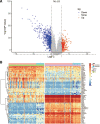



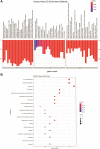
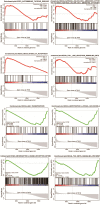

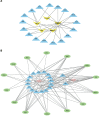
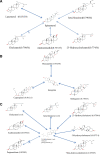
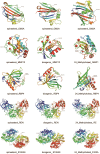
Similar articles
-
Molecular mechanisms of Biyu decoction as treatment for psoriasis: A network pharmacology and molecular docking study.World J Clin Cases. 2022 Jul 26;10(21):7224-7241. doi: 10.12998/wjcc.v10.i21.7224. World J Clin Cases. 2022. PMID: 36158000 Free PMC article.
-
Exploring the Effect of Xiao-Chai-Hu Decoction on Treating Psoriasis Based on Network Pharmacology and Experiment Validation.Curr Pharm Des. 2024;30(3):215-229. doi: 10.2174/0113816128288527240108110844. Curr Pharm Des. 2024. PMID: 38532341
-
Network Pharmacology-Based Analysis on the Mechanism of Action of Ephedrae Herba-Cinnamomi Ramulus Couplet Medicines in the Treatment for Psoriasis.Med Sci Monit. 2021 Jan 29;27:e927421. doi: 10.12659/MSM.927421. Med Sci Monit. 2021. PMID: 33513128 Free PMC article.
-
Exploration of the mechanism of Zisheng Shenqi decoction against gout arthritis using network pharmacology.Comput Biol Chem. 2021 Feb;90:107358. doi: 10.1016/j.compbiolchem.2020.107358. Epub 2020 Aug 8. Comput Biol Chem. 2021. PMID: 33243703 Review.
-
Exploring the molecular mechanism of Ling-Gui-Zhu-Gan decoction for the treatment of type 2 diabetes mellitus based on network pharmacology and molecular docking: A review.Medicine (Baltimore). 2023 Mar 24;102(12):e33210. doi: 10.1097/MD.0000000000033210. Medicine (Baltimore). 2023. PMID: 36961137 Free PMC article. Review.
Cited by
-
Optimization of Anthralin Microemulgel Targeted Delivery for Psoriasis and Acne.Molecules. 2025 Jun 17;30(12):2629. doi: 10.3390/molecules30122629. Molecules. 2025. PMID: 40572592 Free PMC article.
References
-
- Boehncke WH, Schön MP. Psoriasis. Lancet. 2015;386:983–94. - PubMed
-
- Ding X, Wang T, Shen Y, et al. . Prevalence of psoriasis in China: a population-based study in six cities. Eur J Dermatol. 2012;22:663–7. - PubMed
-
- Lin W, Yu Q, Qin Y, et al. . To explore the clinical efficacy of traditional Chinese medicine bath in the treatment of psoriasis vulgaris with blood-heat syndrome and its effect on related cytokines based on different temperature and different concentration. Medicine (Baltimore). 2020;99:e20172. - PMC - PubMed
-
- Armstrong AW, Read C. Pathophysiology, clinical presentation, and treatment of psoriasis. JAMA. 2020;323:1945–60. - PubMed
MeSH terms
LinkOut - more resources
Full Text Sources
Medical

